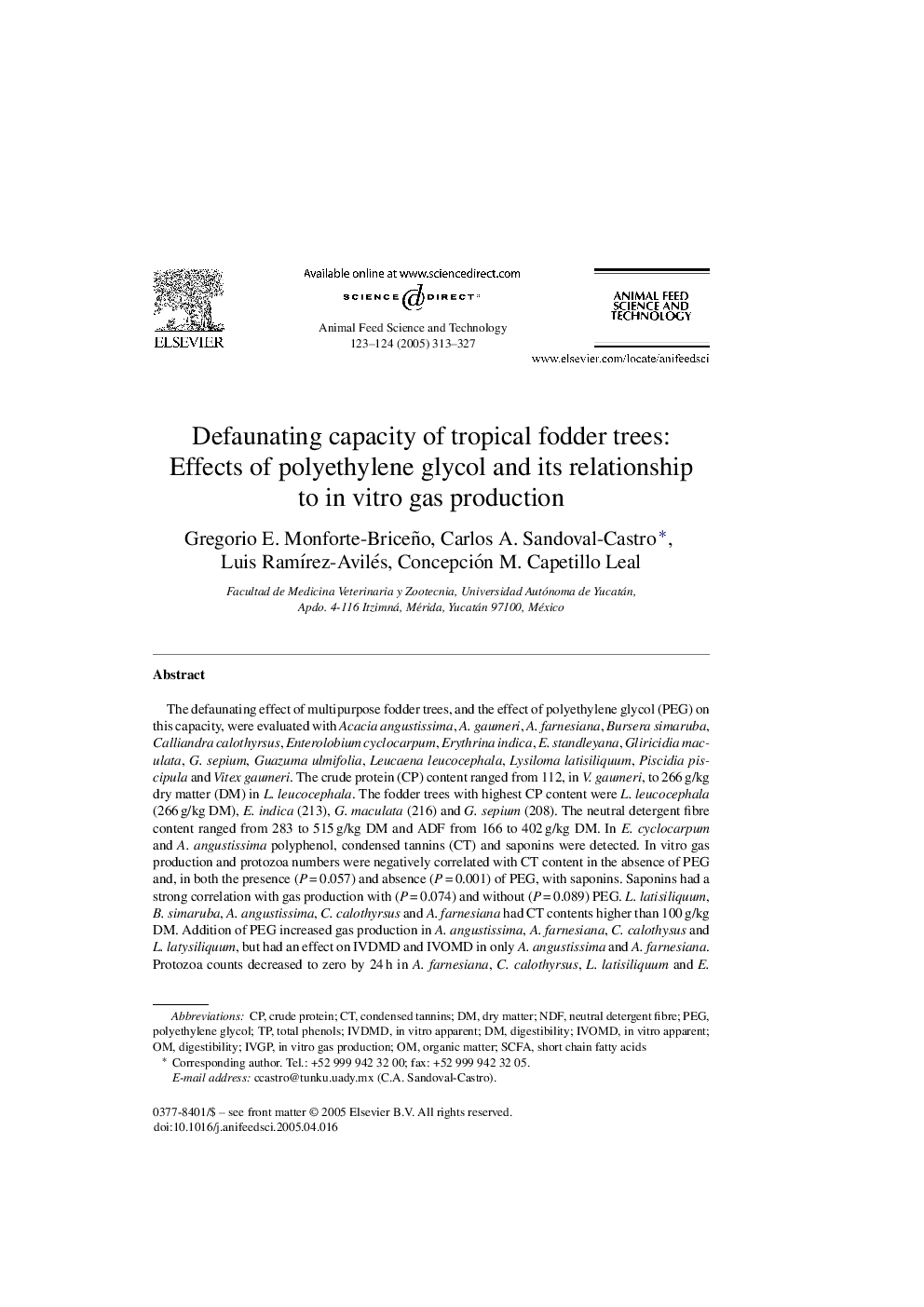| Article ID | Journal | Published Year | Pages | File Type |
|---|---|---|---|---|
| 9916620 | Animal Feed Science and Technology | 2005 | 15 Pages |
Abstract
The defaunating effect of multipurpose fodder trees, and the effect of polyethylene glycol (PEG) on this capacity, were evaluated with Acacia angustissima, A. gaumeri, A. farnesiana, Bursera simaruba, Calliandra calothyrsus, Enterolobium cyclocarpum, Erythrina indica, E. standleyana, Gliricidia maculata, G. sepium, Guazuma ulmifolia, Leucaena leucocephala, Lysiloma latisiliquum, Piscidia piscipula and Vitex gaumeri. The crude protein (CP) content ranged from 112, in V. gaumeri, to 266Â g/kg dry matter (DM) in L. leucocephala. The fodder trees with highest CP content were L. leucocephala (266Â g/kg DM), E. indica (213), G. maculata (216) and G. sepium (208). The neutral detergent fibre content ranged from 283 to 515Â g/kg DM and ADF from 166 to 402Â g/kg DM. In E. cyclocarpum and A. angustissima polyphenol, condensed tannins (CT) and saponins were detected. In vitro gas production and protozoa numbers were negatively correlated with CT content in the absence of PEG and, in both the presence (PÂ =Â 0.057) and absence (PÂ =Â 0.001) of PEG, with saponins. Saponins had a strong correlation with gas production with (PÂ =Â 0.074) and without (PÂ =Â 0.089) PEG. L. latisiliquum, B. simaruba, A. angustissima, C. calothyrsus and A. farnesiana had CT contents higher than 100Â g/kg DM. Addition of PEG increased gas production in A. angustissima, A. farnesiana, C. calothysus and L. latysiliquum, but had an effect on IVDMD and IVOMD in only A. angustissima and A. farnesiana. Protozoa counts decreased to zero by 24Â h in A. farnesiana, C. calothyrsus, L. latisiliquum and E. cyclocarpum, and by 48Â h in A. angustissima. Addition of PEG maintained protozoa populations up to the 72Â h in A. farnesiana, C. calothyrsus and L. latisiliquum, but not in E. cyclocarpum and A. angustissima, indicating an effect of saponins in these plants. PEG can be used to differentiate defaunating effects of CT from other secondary plant compounds, such as saponins.
Keywords
Related Topics
Life Sciences
Agricultural and Biological Sciences
Animal Science and Zoology
Authors
Gregorio E. Monforte-Briceño, Carlos A. Sandoval-Castro, Luis RamÃrez-Avilés, Concepción M. Capetillo Leal,
